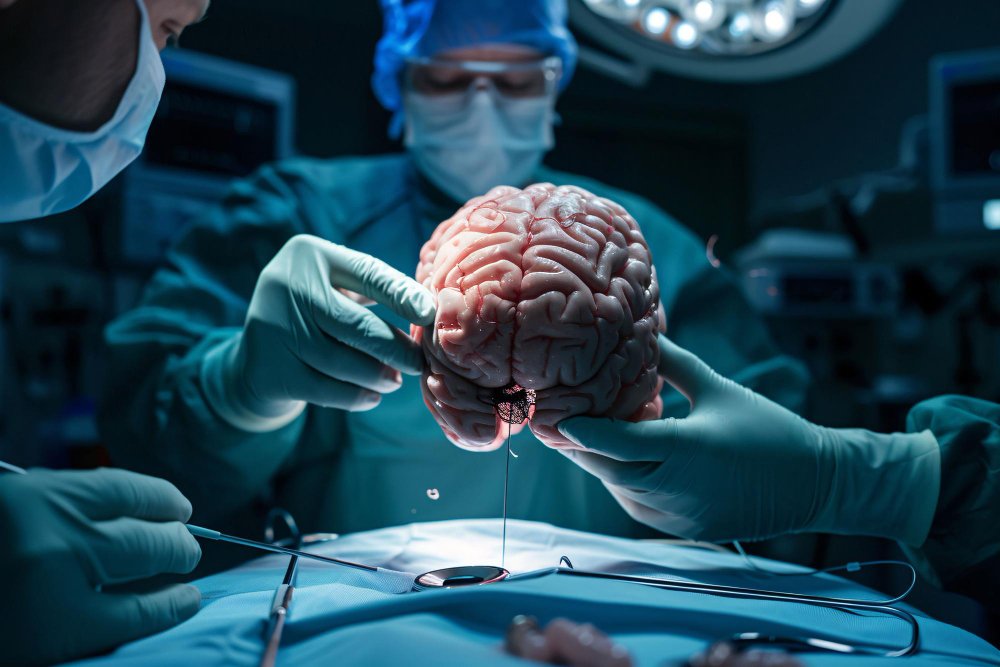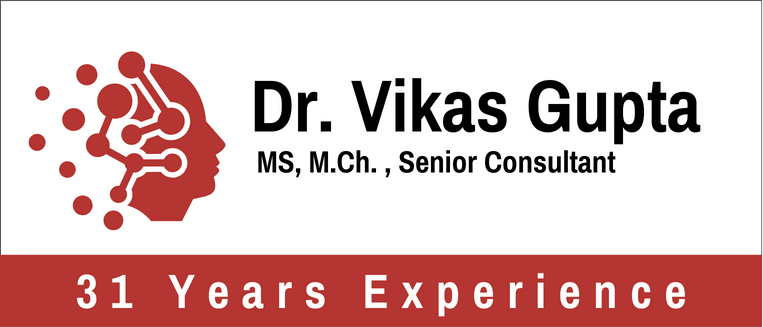
Are you confused between neurosurgery and neurointervention for treating a brain or spine condition? You’re not the only one. Many patients and families struggle to understand the difference between these two specialties, especially when facing serious concerns like brain aneurysms, tumours, strokes, or spinal issues.
This blog will make things simple. We’ll explain how each treatment works, what procedures are involved, the technology used, recovery time, and even the cost of treatment in India. If you’re trying to choose the right path forward, this guide is your starting point.
What Is Neurosurgery?
Neurosurgery is a medical speciality that involves performing surgical procedures on the brain, spinal cord, and peripheral nerves. These procedures are typically done in an operating room, often under general anaesthesia. Neurosurgery can involve traditional open techniques or more advanced, minimally invasive approaches.
Common Neurosurgery Treatments:
- Brain tumour removal
- Spinal cord decompression
- Surgery for epilepsy
- Deep brain stimulation (DBS)
- Traumatic brain injury repair
- Aneurysm clipping
- Hydrocephalus (shunt placement)
- Congenital brain or spine corrections
“Neurosurgery is essential when structural issues need to be physically corrected—like a tumour that has to be removed or a spine that needs realignment,” explains Dr. Vikas Gupta.
What Is Neurointervention (Interventional Neurology)?
Neurointervention, also known as interventional neurology or neurointerventional radiology, is a less invasive way to treat certain brain and spine conditions. Instead of making large incisions, catheters and guidewires are inserted through blood vessels, usually from the groin, and navigated up to the brain or spinal cord using imaging technology.
Common Interventional Neurology Procedures:
- Coiling for brain aneurysms
- Mechanical thrombectomy for stroke
- Carotid artery stenting
- Embolisation of arteriovenous malformations (AVMs)
- Vertebroplasty for spinal fractures
- Diagnostic cerebral angiography
“In stroke care, minutes matter. Neurointervention allows us to act fast and save brain tissue, especially with techniques like mechanical thrombectomy,” says Dr. Vikas Gupta.
Key Differences: Neurosurgery vs. Neurointervention
| Aspect | Neurosurgery | Neurointervention |
| Approach | Open or minimally invasive surgery | Catheter-based, image-guided |
| Hospital Stay | 5–10 days or more | 1–3 days on average |
| Anesthesia | General | Local or mild sedation |
| Recovery Time | Weeks to months | Days to a few weeks |
| Best For | Tumours, trauma, large defects | Stroke, aneurysms, vascular malformations |
| Technology | Surgical tools, microscopes, navigation | Fluoroscopy, DSA, catheters, MRI, CT |
| Scarring | Incisions visible | No major scars; just a puncture site |
“Both approaches have their place,” says Dr. Vikas Gupta. “Sometimes we start with a minimally invasive neurointervention, and if the response isn’t optimal, we switch to open neurosurgery.”
When Is Neurosurgery the Right Option?
Neurosurgery is usually recommended when:
- A brain tumour needs complete or partial removal
- There’s a traumatic brain or spine injury
- Spinal instability requires surgical correction
- Minimally invasive options have failed
Conditions like skull fractures, large tumours, or spinal deformities are typically treated surgically.
“We often reserve neurosurgery for cases where intervention needs to be direct and comprehensive,” adds Dr. Gupta. “It gives us full control, especially in complex anatomical regions.”
A patient of Dr. Vikas Gupta shared, “I was diagnosed with a brain tumour after experiencing frequent headaches and vision issues. That’s when I consulted Dr. Vikas Gupta. He suggested going ahead with surgery. The tumour was successfully removed through a craniotomy. The entire procedure and recovery were smoother than I expected. I stayed in the hospital for just 6 days and was walking with support within a week. I’m now back at work and leading a normal life again.”
When Is Neurointervention a Better Choice?
Neurointervention may be suitable when:
- A patient is experiencing a stroke and needs rapid clot removal
- A brain aneurysm or AVM can be treated through embolisation
- Open surgery poses a high risk due to age or comorbidities
- A faster, less invasive option is clinically safe and effective
Stroke treatment using neurointervention like mechanical thrombectomy has revolutionised care, primarily when performed within the critical window of 4–6 hours after stroke onset.
The family member of a patient shared, “When my mother suddenly lost speech and movement on one side, we rushed her to the hospital. Within minutes, Dr. Vikas Gupta and his team were ready. He performed a mechanical thrombectomy to remove the clot that caused her stroke. She began regaining speech within a few hours and movement in her limbs over the next few days. Dr. Gupta’s quick action and the minimally invasive procedure saved her life.”
The Best of Both Worlds: Endovascular Neurosurgery
A growing area of practice is endovascular neurosurgery, where both open and catheter-based procedures are being performed. This hybrid approach ensures the patient gets the most appropriate treatment for their condition.
Examples include:
- Aneurysm coiling vs clipping
- Embolisation before tumour surgery
- Treatment of complex spinal vascular disorders
This dual skill set improves outcomes and reduces the need to refer across specialities.
Technology That Powers Neurointervention
Neurointervention relies heavily on advanced imaging and specialised tools:
- Digital Subtraction Angiography (DSA): Real-time imaging of blood vessels
- Microcatheters & Guidewires: To navigate through delicate vascular paths
- Coils, stents, and balloons: Used to treat aneurysms or open up blocked arteries
- Navigation systems: Enhance accuracy in real-time
“The beauty of neurointervention lies in its precision,” Dr. Gupta explains. “We can access deep areas of the brain through a pinhole without disturbing surrounding tissue.”
Cost of Neurosurgery and Neurointervention Procedures in India
India offers world-class neurosurgical and neurointerventional care at significantly lower costs than in the West.
| Procedure Type | Procedure Name | Cost in India (INR) | Approx. USD |
| Neurosurgery | Brain Tumour (Craniotomy) | 3,50,000 – 6,00,000 | 4,200 – 7,500 |
| Neurosurgery | Spinal Decompression | 2,50,000 – 4,50,000 | 3,000 – 5,600 |
| Neurosurgery | Aneurysm Clipping | 4,00,000 – 6,50,000 | 4,800 – 8,000 |
| Neurointervention | Aneurysm Coiling | 3,00,000 – 5,50,000 | 3,600 – 6,700 |
| Neurointervention | Stroke Thrombectomy | 2,50,000 – 4,00,000 | 3,000 – 4,800 |
| Neurointervention | Cerebral Angiography | 25,000 – 40,000 | 300 – 500 |
Final Thoughts
Understanding the distinction between neurosurgery vs neurointervention is essential when deciding on a treatment plan for brain and spine disorders. Both specialities have their unique strengths, and the right choice depends on the patient’s condition, urgency, overall health, and long-term goals.
While brain surgery vs neurointervention may seem like a choice between old and new, in reality, they are complementary disciplines. With modern advancements in endovascular neurosurgery and interventional neurology procedures, many patients today benefit from a blended approach.
FAQs on Neurosurgery and Neurointervention
1. What’s the recovery time for each?
Neurosurgery may require 4–8 weeks or more, depending on the procedure, and Neurointervention may require recovery within 7–14 days.
2. Can neurointervention treat all types of brain problems?
Neurointervention is best for vascular issues like strokes, aneurysms, and AVMs. Solid tumours, severe trauma, or structural problems usually need neurosurgery.
3. Are there visible scars with neurointervention?
Neurointervention is performed via a small puncture in the groin or wrist, leaving no visible scars on the head or spine.
4. Is general anaesthesia required for neurointervention?
Most neurointerventions are performed under local anaesthesia or mild sedation, which reduces anaesthesia-related risks.
5. What kind of follow-up is required after neurointervention or neurosurgery?
Periodic imaging tests are required to monitor progress (like MRI or CT), along with physical rehab if needed. Stroke or aneurysm patients may also require medication and lifestyle changes.
Explore more blogs: What Are the Advantages of Minimally Invasive Brain Surgery?
